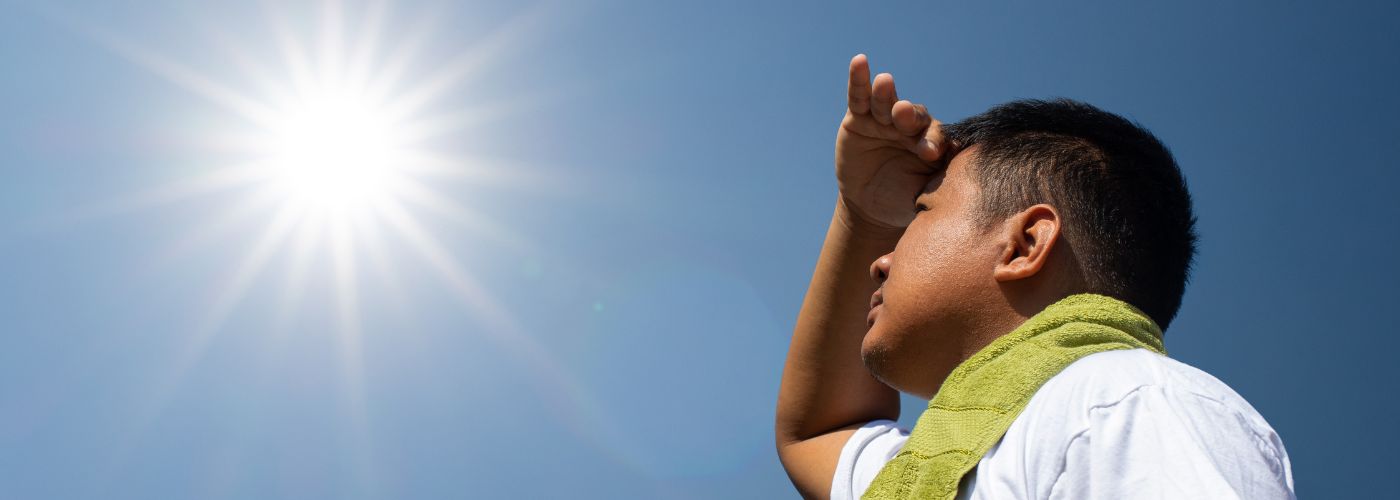Nevada, known for its arid climate and scorching desert landscapes presents unique challenges for workers who are exposed to high temperatures in outdoor environments. As the state’s economy thrives on industries such as agriculture, construction, landscaping, and mining which often require individuals to toil under the sun for extended periods, it becomes imperative to prioritize the well-being and safety of these workers. This article aims to shed light on Nevada’s laws and regulations that safeguard employees’ rights in hot outdoor workplaces.
New Nevada Law For Heat Injuries & Illnesses
On June, 15, 2022, the Nevada Occupational Safety and Health Administration (OSHA) enacted the Guidance for Nevadan Business related to the Heat Illness National Emphasis Program (NEP).
This program is designed to protect employees working in hot outdoor environments that exceed over 90 degrees Fahrenheit. The sole purpose of NEP is to help prevent heat-related illnesses and injuries while on the job.
Heat related illnesses and injuries are considered a part of work-related injury or even premises liability laws depending on the events.
During high-risk work days, Nevada OSHA provides the following:
- Inspects targeted outdoor work industries to ensure they comply with NEP.
- Reviews any case related to heat-related fatality or catastrophe.
- Engages in public outreach to keep workers safe on the job.
NEP targets over 30 industries that range from agriculture to construction to embody the entire outdoor workforce in Nevada.
What Is Heat Exhaustion?
NEP is designed to prevent heat exhaustion and other related injuries and illnesses caused by it. Heat exhaustion is a condition that occurs when the body overheats due to prolonged exposure to high temperatures and inadequate fluid intake.
It is often a precursor to heatstroke, which is a more severe and life-threatening condition. Heat exhaustion typically occurs during hot weather or in situations where individuals are engaged in strenuous physical activities for an extended period without proper hydration.
The symptoms of heat exhaustion can vary but commonly include excessive sweating, fatigue, dizziness, headache, nausea, clammy skin, rapid heartbeat, and muscle cramps. These signs occur as the body tries to cool itself down by increasing blood flow to the skin’s surface and producing sweat.
If left untreated or ignored, heat exhaustion can progress quickly into heatstroke. Therefore, it is crucial to recognize the symptoms and take immediate steps to cool down and rehydrate if you suspect heat exhaustion.
Heat injuries and illnesses can often lead to fatalities if left untreated or ignored. The CDC reports an estimated 700 deaths related to heat injuries and illnesses each year.
Can You Sue For Heat Injuries & Illnesses?
Wrongful death can occur due to a number of circumstances, and extreme heat is no exception. When someone dies as a result of heat-related injuries or illnesses, it may be possible to file a lawsuit for wrongful death against the responsible party.
Heat injuries and illnesses can range from heat exhaustion and heatstroke to dehydration and organ failure. These conditions are often preventable if proper safety measures are in place, making it crucial to explore the legal options available.
In order to sue for heat injuries and illnesses resulting in wrongful death, several factors need to be considered. Firstly, it must be established that the responsible party had a duty of care towards the victim and failed to fulfill this duty by neglecting necessary precautions such as providing adequate shade, hydration breaks, or training on recognizing symptoms.
Second, it must be proven that the responsible party’s negligence directly caused or contributed to the heat injuries or illnesses. This can be demonstrated by gathering evidence such as witness testimonies, medical records, and expert opinions.
Furthermore, it is important to assess whether the victim had any contributory negligence. If it can be shown that the victim did not follow safety protocols or disregarded warnings, this may impact the potential success of a lawsuit.
How To Protect Yourself From Heat Injuries & Illnesses
As the summer heat intensifies, it’s crucial to arm yourself with knowledge on how to protect your body from potential heat injuries and illnesses.
First and foremost, stay hydrated! Dehydration is one of the primary causes of heat exhaustion and other related illnesses. Drink plenty of water throughout the day, even if you don’t feel thirsty.
Second, avoid alcohol and caffeinated beverages as they can exacerbate dehydration by increasing urine output. Alcohol and sugary drinks can dehydrate you by acting as diuretics, causing your body to lose more water through increased urination. Instead, opt for water or electrolyte-rich beverages like sports drinks to replenish fluids and minerals lost through sweating.
Lastly, dress appropriately for hot weather by choosing loose-fitting, lightweight clothing made of breathable fabrics such as cotton or linen. These materials allow air circulation, helping to evaporate sweat and cool down your body.
Overall, keep these tips in mind and report any issues related to heat premises liability problems to your superior or the Nevada OSHA. The Nevada OSHA is a federal organization and therefore doesn’t have any conflict of interests with your employer. It’s sole duty is to protect the workers. Any wrong doing that leads to injury or illness may lead to worker’s compensation.





How Shared Liability Affects Your Car Accident Claim
Have you ever wondered why two drivers can both be found at fault in a
Mar
What Are Punitive Damages? Can You File A Claim For Them?
Have you ever wondered why some lawsuits result in hefty payouts while others barely scratch
Mar
Can Parents Be Sued For Their Child’s Car Accident?
Many parents believe their kids are too young to cause serious trouble on the road,
Feb
Can You File A Claim For Injuries That Happened In School?
Every year, countless students experience injuries while attending school, yet most never think about seeking
Feb